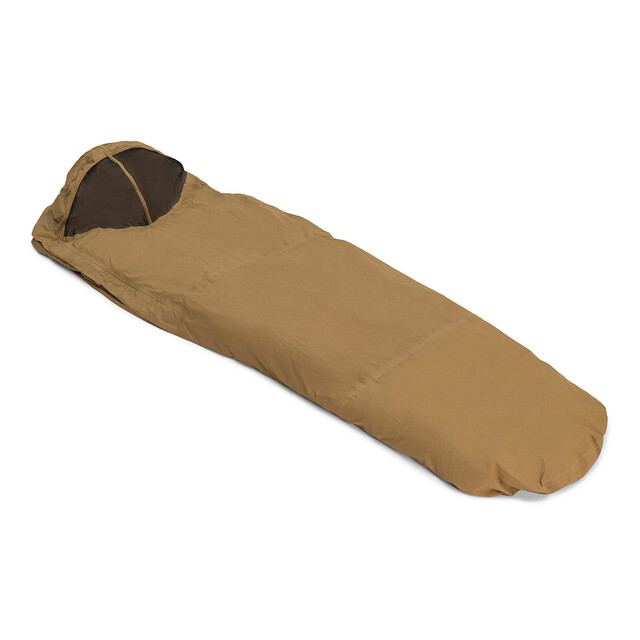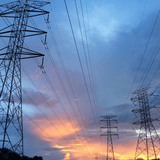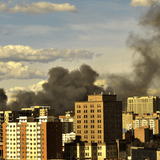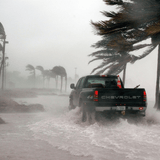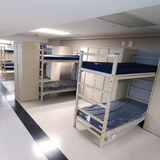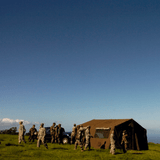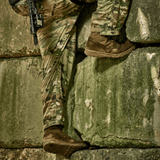Tough, Tested, and Timeless: A Guide to Surplus Military Tents
If you’re looking for a sturdy tent that can handle anything from wild storms to sub-zero nights, military surplus tents are a great place to start. These are no ordinary camping tents—they’re built for war zones, field hospitals, and arctic expeditions. But before military tents became the rugged shelters we know today, they went through a long evolution of design, materials, and use.
In this guide, we’ll cover the different types available and what to look for when buying your first military surplus tent.
US Military Tents throughout History
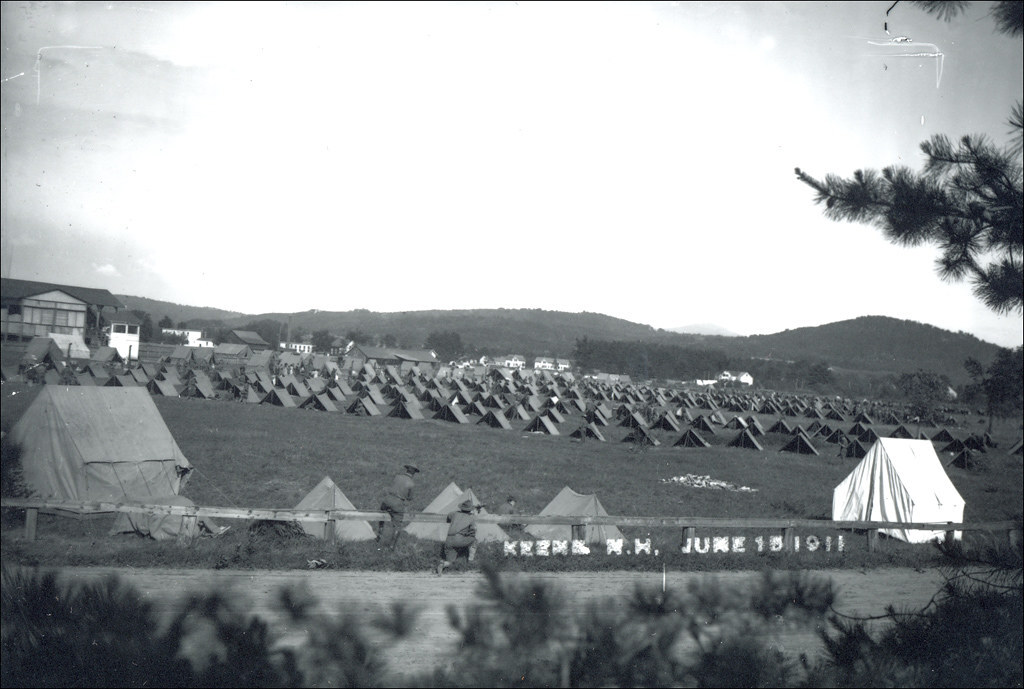
The history of military tents in America goes back to the Revolutionary War when soldiers used simple wedge tents that were little more than a piece of heavy canvas draped over a wooden pole frame.
It wasn’t until the 19th and 20th centuries that militaries—including the U.S. Army—began to standardize tent designs. During the Civil War, for example, Union soldiers were issued “shelter halves” that could be buttoned together to form small tents.
As military campaigns expanded into harsher environments, the U.S. military worked to improve both materials and design. During World War I, heavier canvas tents were widely used, supported by wooden poles and guy ropes. By World War II, steel poles and reinforced seams became common, and specialized tents like field hospitals, command posts, and mess tents were introduced. The post-war period brought rapid innovation in synthetic materials, making tents lighter, stronger, and more weather-resistant.
Military Tents Today
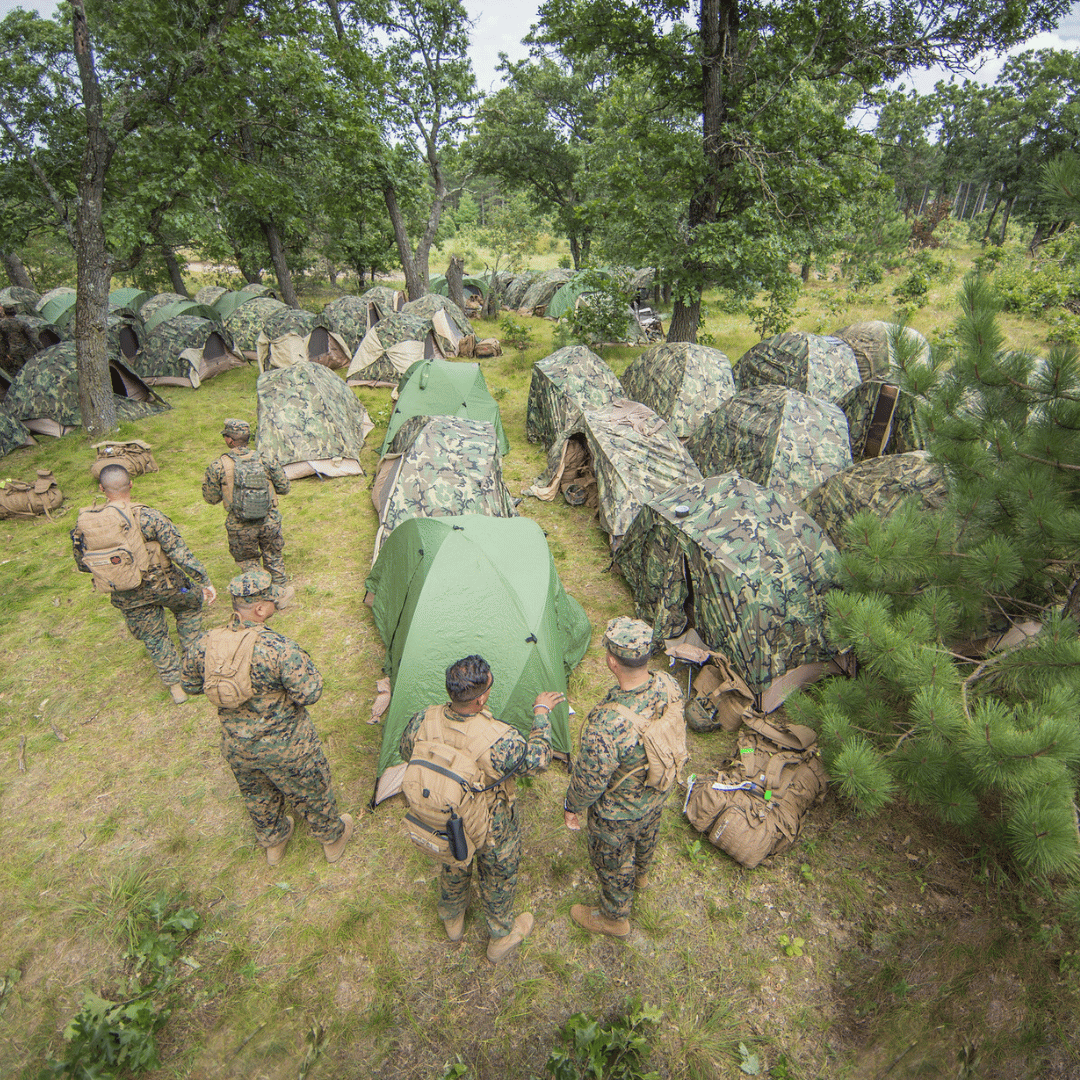
Today, the U.S. military now uses a wide range of shelter systems, from small, one-person bivy tents to massive inflatable structures used for command centers and field hospitals. Each branch—the Army, Marine Corps, Navy, and Air Force—has its own preferred tent systems and field standards.
These standards are set by the Defense Logistics Agency (DLA), as well as other procurement branches. They dictate everything from flame resistance to blackout capability and performance in extreme conditions.
They are made by suppliers such as:
- Alaska Structures
- CAMSS Shelters
- Litefighter
- Outdoor Venture Corporation
- Unifire
- UTS Systems
- Weatherhaven Resources
These suppliers must pass quality control to ensure they meet military specifications (or “mil-spec”), so quality and performance is guaranteed.
Military vs. Civilian Tents
When it comes to tents, there are plenty of civilian models available. These are often lighter weight than military tents, and sometimes durable. However, Military surplus tents offer several advantages over civilian models:
- Durability: Military tents are designed for durability, with heavy-duty materials and reinforced seams, so surplus tents will typically last generations.
- Cost: Surplus tents are typically much cheaper than civilian models of the same quality and functionality.
- Weather resistance: Some types of military surplus tents were designed to withstand very harsh weather. While special civilian models exist for harsh conditions, they tend to be pricier and less durable than surplus options.
- Made in the USA: The Berry Amendment of 1941 requires that key Department of Defense items—including tents—be entirely made in the USA. By contrast, most commercial tents are made abroad, typically in China.
- Support USA businesses: Most military surplus stores are based in the USA, so it’s a good way to buy Made in the USA gear and also support local small businesses.
- Nostalgia: There is a huge nostalgic appeal to using military surplus tents, and fellow outdoors people might recognize them.
Types of Military Surplus Tents
Pup Tents
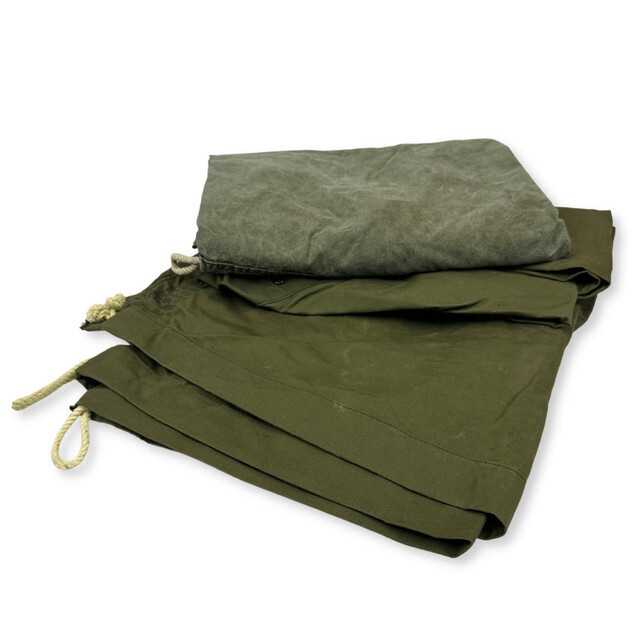
The original pup tents were designed for Union soldiers in the Civil War. They consisted of two tarps that snapped together over a ridgeline to make an A-frame shelter. They allegedly got their name because soldiers said they were better suited to shelter a dog than a man.
While pup tents were lighter and more portable than previous military tents, they didn’t have a floor, so soldiers would often have to sleep on the mud. Despite this flaw, the US military continued to use pup tents through the Korean war.
- Features: Basic A-frame design, usually canvas construction, minimal weather protection, no floor
- Best Uses: Simple shelter, reenactments, collectors
General Purpose (GP) Tents
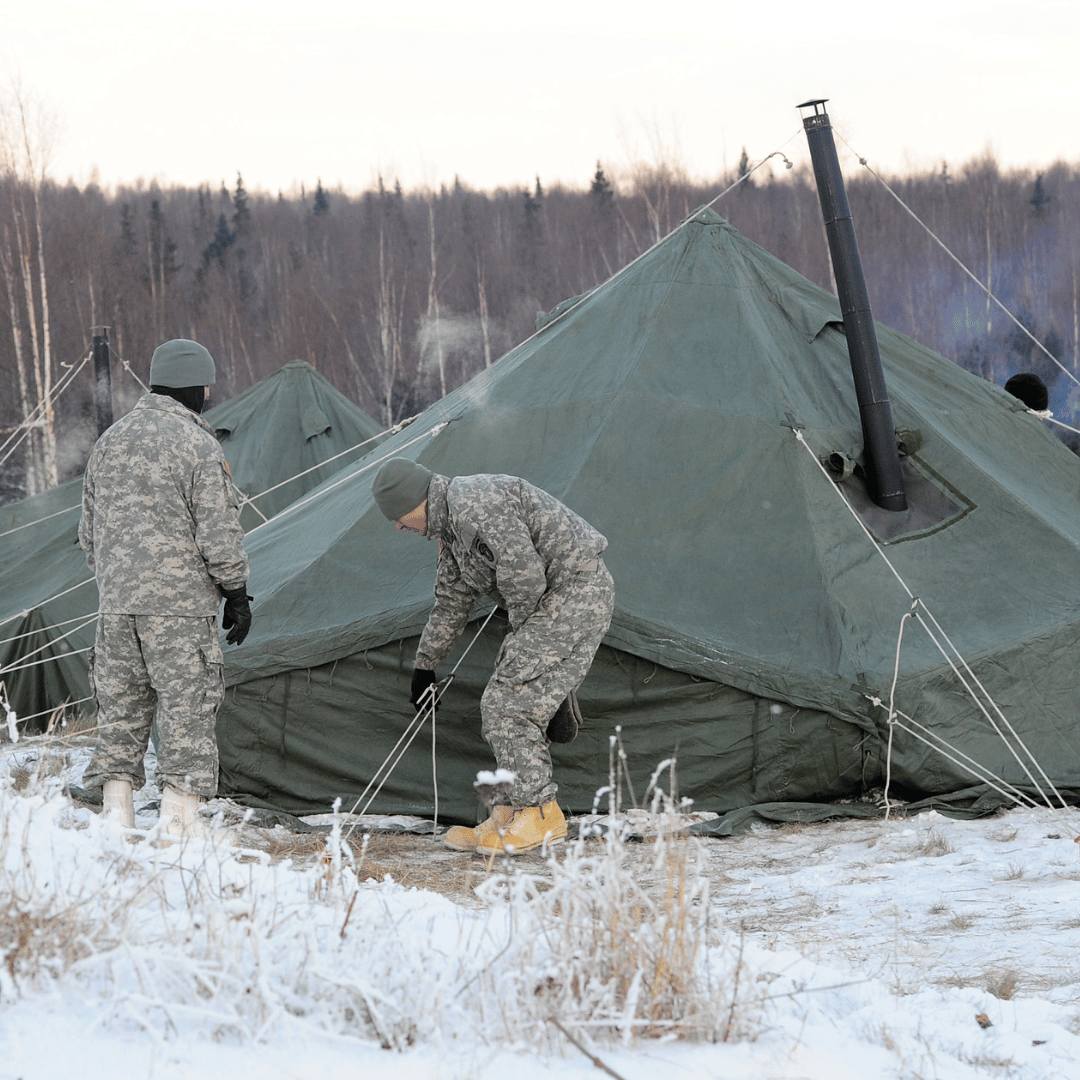
The GP tent is a classic military workhorse, used for decades to house troops, equipment, and operations in the field. Available in small, medium, and large sizes, GP tents are made from heavy-duty canvas and supported by internal poles and guy lines.
They can be heated with a stove and often feature roll-up sides for ventilation in warmer weather. Though heavier than modern tents, they’re incredibly durable and can last for years.
- Features: Canvas construction, center pole or ridge support, multiple size options
- Best uses: Base camp shelter, events, long-term outdoor storage
Combat Tents
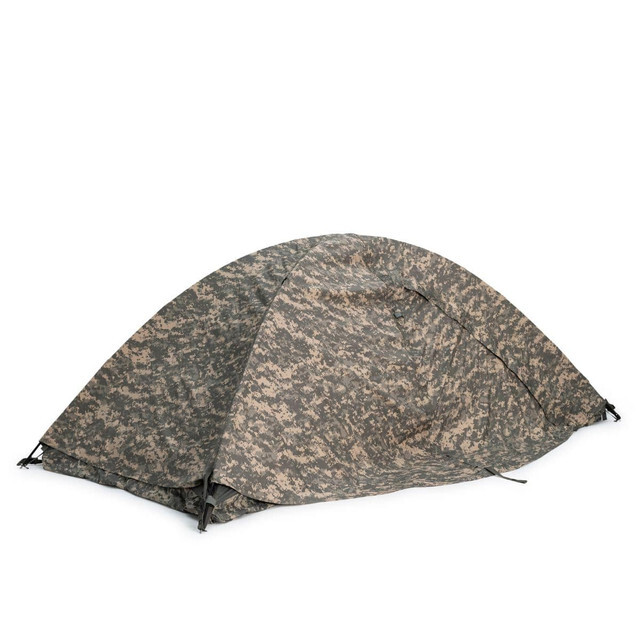
Designed to replace canvas models like the shelter half and GP small, combat tents are freestanding, double-walled, and made of lightweight yet materials. They provide better protection from the elements and allow for quick setup and takedown.
Combat tents are often used in field conditions where troops need a quick, reliable shelter for one or two people. One of the most popular options is the Military Combat One Person Tent (TCOP).
- Features: Lightweight nylon or polyester construction, freestanding frame, and most have a blackout rainfly and insect netting
- Best Uses: Backpacking, field camping, bug-out shelters
Bivy Tents
Short for “bivouac,” bivy tents are minimalist shelters designed for one person. Used by special forces and long-range patrols, these tents are compact, low-profile, and easy to conceal. Most are waterproof and include insect netting.
Modern military bivy sacks, such as the US Issue Gore-Tex ACU Bivy, often integrate with a sleeping bag system. They’re ideal for fast-moving operations where weight and stealth matter.
- Features: Ultralight, waterproof fabric, low visibility, integrates with sleep systems
- Best Uses: Stealth camping, bug-out bags, solo survivalMedical Tents
Extreme Cold Weather Tents
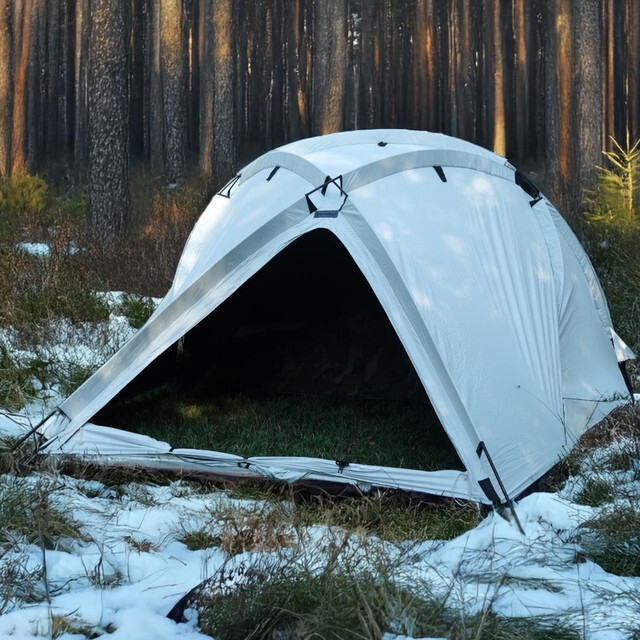
Also known as Arctic tents or ECWTs, these shelters are designed for subzero environments. The military uses several models, including dome-shaped or hexagonal tents built to withstand heavy snow, high winds, and freezing temperatures.
The double-walled construction traps warmth, while vents reduce condensation. Setup is usually manageable even with gloves, and snow skirts or stake loops keep them anchored in harsh conditions.
- Features: Four-season design, double-wall construction, heavy duty poles, vestibule, snow skirt, floor opening for stove cooking or ice hole access
- Best Uses: Winter camping, hunting in cold climates, alpine expeditions
Modular Command Post System (MCPS) Tents
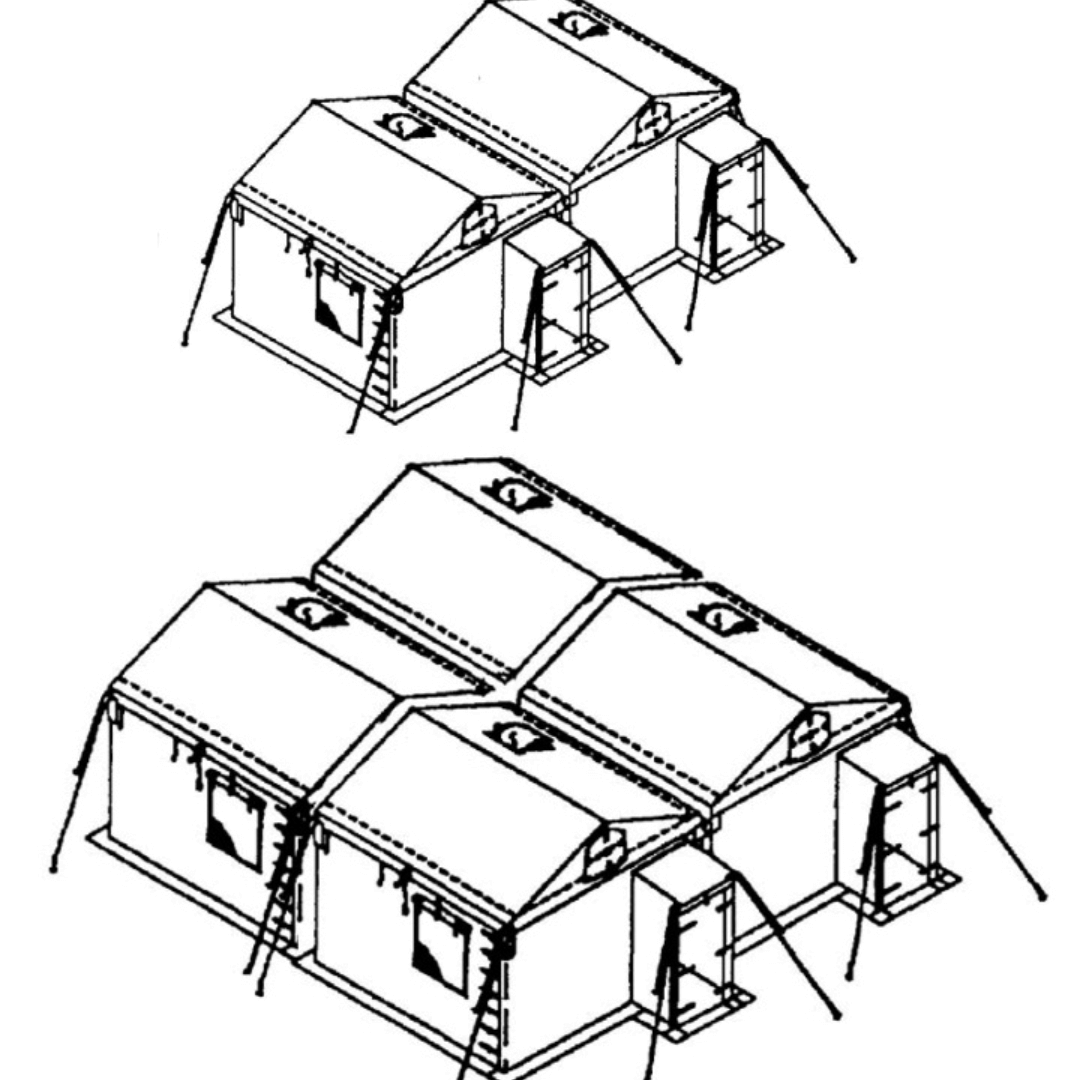
These tents consist of multiple pieces that can be pieced together into various configurations, making it a highly versatile and customizable setup. For example, a MCPS can be turned into a single-room workstation, or multiple MCPS tents can be linked together to create a multi-room command center.
The pieces can have a surprising amount of features, such as HVAC ports and blackout linings. However, MCPS tents are not for casual camping out since a one-room setup can easily weigh over 250lbs.
- Features: Modular layout, climate control compatibility, power and data access, compatible with boot kits for connecting to vehicle
- Best Uses: Event setups, field offices, emergency operations centers
Military Surplus Tent Materials
One of the most important things to consider when choosing a military surplus tent is the material it’s made from. The fabric affects not only the tent’s weight and durability, but also how well it handles weather, wear, and long-term storage.
Canvas Surplus Tents
Older military tents—especially GP tents and pup tents—were almost always made from heavy-duty canvas. This material is extremely durable and can withstand rough handling, prolonged sun exposure, and even some abrasion.
However, canvas does have its drawbacks. It’s very heavy and becomes even heavier when wet. Canvas is also highly susceptible to mildew and mold if not properly dried before storage.
Synthetic Fiber Surplus Tents
Newer models of surplus tents are typically made from synthetic materials such as nylon or polyester. These synthetics are significantly lighter than canvas, making them easier to carry and more packable. The tradeoff is that they aren’t as durable as canvas tents and, while fireproof, sparks will create holes in the material.
Many synthetic surplus tents now also have a waterproof coating, such as Durable Water Repellent (DWR) or polyurethane (PU) coatings, on them. These help shed rain while still allowing for breathability to prevent condensation within the tent. Note that these coatings wear off over time, so you may need to reapply it before taking one of these tents into the field.
Things to Know Before Buying Military Surplus Tent
Want to buy a surplus tent? Before you start shopping, you’ll want to know these things about buying military surplus to ensure you get the right tent and aren’t surprised by its condition.
Condition Grades
When buying military surplus tents, it’s important to pay attention to the “grade.” The grade tells you the condition of the tent. While there is no uniform grading system, most surplus sellers use these grades:
- New: Never used
- Grade 1: Used but still in very good condition with minimal signs of wear
- Grade 2: Show some signs of wear but are still functional
- Grade 3: Show signs of wear and may require repairs
For more, read our Guide to Military Surplus Condition Grades
Weight and Packability
With the exception of bivvy tents and combat tents, most military surplus tents are not meant for backpacking. They are heavy and often bulky. Large models, such as medical tents, can easily weigh over 100lbs. If you need something lightweight but still want to buy surplus, consider using a tarp shelter instead.
Mold, Mildew and Smells
Military tents have often been sitting in storage for long periods of time before they even make it to the surplus store. As a result, they can end up with some mold or mildew growth, or some bad smells (hardcore fans will even come to love this “surplus smell”!). Canvas is an absorbent material, so surplus canvas tents are particularly prone to it.
Don’t let this dissuade you though. The smell can be removed by washing or airing out. For more, read: How to Get the Smell Out of Military Surplus Gear
Ready to start shopping? See our selection of Authentic Military Surplus Tents.


